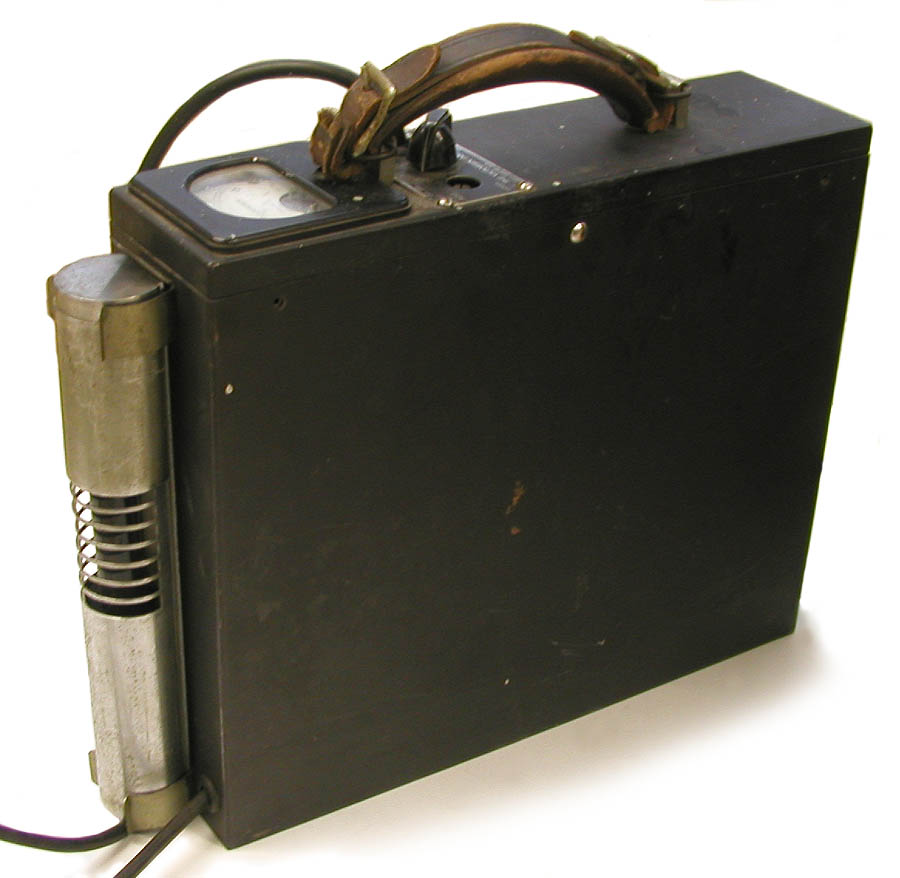Victoreen Model 263, the "Doc" (ca. 1940-1947)

Developed in 1939 or 1940, the “Doc” (Model 263) seems to have been the second survey meter produced by the Victoreen Instrument Company.It alsoappears to be the first commercially available survey meter employing a GM detector, at least in theUnited States. Don Collins, who served as a staff officer involved with Manhattan District activities during WW II, recalls its origin as follows: “With the able assistance of Bob Smith, I developed a portable Geiger counter instrument, code named “Doc,” in a little black suitcase. It was the first to use the monostable multivibrator that eliminated the amplifier zero drift” (Health Physics: A Backward Glance, 1980).
When I asked Collins about the meaning of the name “Doc,” he told me that the instrument was named after one of the characters in the Disney movie “Snow White,”i.e., one of the seven dwarves. The name given to a Manhattan District air sampler, the “Sneezy,” had an identical explanation.
The Doc employs a black metal case to house the electronics and battery. A detachable glass-walled GM tube is mounted on the front.Headphones were used to monitor the audio output (the cable to the headphones can be seen in the photographs to the right of the range selector knob. As seen in the above photograph, the Model 263 meter reads 0-20 milliamperes. Nevertheless, it was calibrated so that the readout equated to the exposure rate in mR/h.The user could select one of three measurement ranges (identified as 1, 2 and 3 in the Model 263). These corresponded to: 0-0.2 mR/h, 0-2 mR/h, and 0-20 mR/h.


The photo to the right shows a "Doc" being used to "frisk" a worker for contamination.
The example in the collection is a Model 263, it would seem to have been in production at least as late as 1946. Based on the descriptions that appeared in the October and December1949 issues of Nucleonics, the Model 263B seems to have been introduced in late 1949. This would suggest that the Model 263A was introduced around 1947, something confirmed by the fact that the Technical Manual for the 263A was published in 1947. Note that this version of the Model 263 should not be confused with the Model 263 used in Operation Crossroads.
Detector: Victoreen VG 13, glass wall geiger tube, 30 mg/cm2 thick
Size: ca. 10" high x 3 1/4" wide x 12" long
Weight:
- Model 263: ca 15 pounds
- Model 263A: ca. 12 pounds
Batteries:
- Model 263: one 1.5 volt, one 67.5 volt, and one 960 volt batteries
- Model 263A: one 1.5 volt, one 67.5 volt, and three 300 volt batteries
Estimated dates of first manufacture:
- Model 263: ca. 1940-1943
- Model 263A: ca. 1947
- Model 263B: ca. 1949
References
- Victoreen Instrument Co. Technical Manual Model 263A. November 1947.
- Collins, D.in “Health Physics: A Backward Glance”ed. Kathren, R.L. and Ziemer, P.L., Pergamon Press,New York, 1980.
- >Davis, D.M.Health Physics Division Instrument Manual, ORNL-332, June 1949.
- Model 263 in Operation Crossroads report by Henry Paul,November 7, 1946.
- Atomic Energy CommissionRadiation Instrument Catalog,Catalog No. 2, Part 2, page date July 1, 1950, page SGM-2C.
- Campbell, D.C. Radiological Defense,Vol. IV, Armed Forces Special Weapons Project, 1950.
